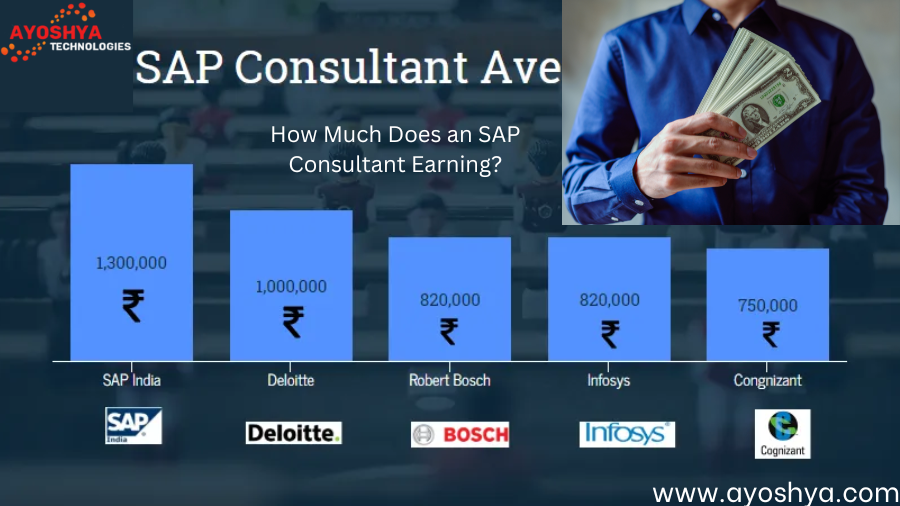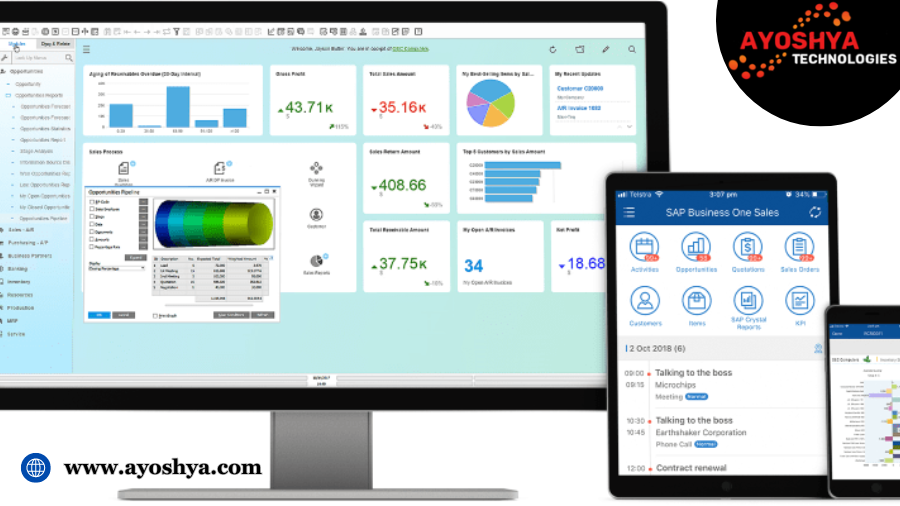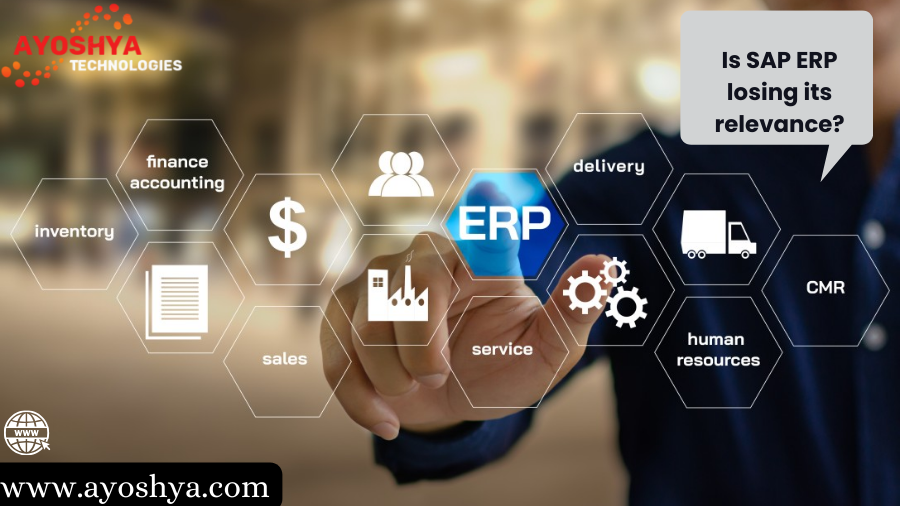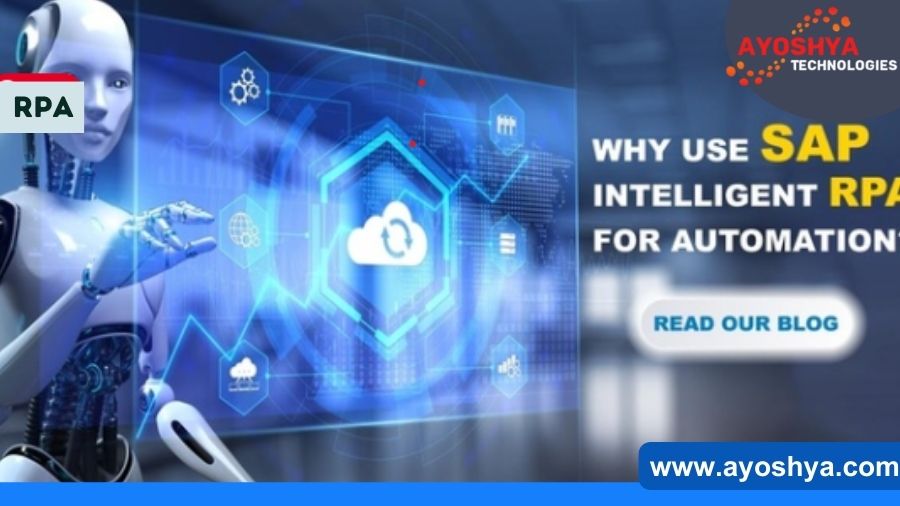How Much Do SAP Consultants Make in 2024?
Curious about a career in SAP? Salary expectations are a key factor. This guide explores SAP consultant salaries in 2024, considering experience, skills, location, and more (…).
Have you ever dreamt of a career that offers a lucrative salary, exciting challenges, and steady growth? Look no further than the dynamic world of SAP consulting Services ! SAP software powers countless businesses across the globe, and the demand for skilled SAP consultants is soaring. But with this growing demand comes a crucial question: how much do SAP consultants actually earn? Whether you’re a seasoned professional considering a switch to SAP or a curious newcomer eager to explore this lucrative field, this comprehensive guide will unveil the secrets behind SAP consultant salaries in 2024. We’ll delve into the factors that influence your earning potential, explore average salary ranges across experience levels, and even provide a global perspective on SAP consultant salaries. So, buckle up and get ready to discover the exciting world of SAP consulting and the significant earning potential it holds!
Factors Affecting SAP Consultant Salaries
The world of SAP consulting offers a vibrant landscape of opportunities, and your earning potential directly reflects your value within this ecosystem. Several key factors come into play when determining how much you can expect to make as an SAP consultant:
- Experience Level:
- Junior Consultants (0-3 years): As a newcomer to the SAP consulting scene, your starting salary will likely reflect your foundational knowledge and initial project involvement. However, this is an excellent springboard for growth. Junior consultants who demonstrate initiative, eagerness to learn, and a strong work ethic can quickly progress through the ranks and see their salaries climb.
- Mid-Level Consultants (3-7 years): With a few years of experience under your belt, you’ll have honed your technical skills, gained exposure to different project phases, and potentially even begun specializing in specific SAP modules. This translates to higher demand and a significant increase in your earning potential. Mid-level consultants often play a more prominent role in projects, and their salaries reflect this increased responsibility.
- Senior Consultants (7+ years): At the senior level, you’ve become a seasoned SAP pro. Your in-depth knowledge, proven track record of successful project delivery, and strong leadership qualities make you a valuable asset. Senior consultants often lead projects, mentor junior team members, and play a strategic role in client engagements. This expertise naturally commands a premium salary, placing senior consultants among the highest earners in the SAP consulting field.
- Skill Set:
- SAP S/4HANA Expertise: SAP S/4HANA is the next-generation ERP system, and consultants with expertise in this platform are in high demand. Having S/4HANA skills on your resume can significantly boost your earning potential compared to focusing solely on legacy ECC systems.
- Specific Module Certifications: While a general understanding of SAP is valuable, specializing in specific modules like FICO (finance), C4C (customer experience), or SuccessFactors (human capital management) can open doors to lucrative opportunities. These specialized skills are highly sought-after, and consultants with deep knowledge in these areas can command top dollar.
- Soft Skills: Beyond technical expertise, strong communication, problem-solving, and interpersonal skills are crucial for success in SAP consulting. The ability to collaborate effectively with clients, understand their business needs, and translate technical concepts into clear language is invaluable. Consultants who possess a well-rounded skillset that combines technical knowledge with strong soft skills are highly attractive to employers and can negotiate higher salaries.
Average SAP Consultant Salary Ranges (US & Global)
Now that you understand the key factors influencing SAP consultant salaries, let’s delve into the nitty-gritty – the actual numbers! While specific salaries can vary depending on the details mentioned above, here’s a breakdown of average salary ranges for SAP consultants in the United States based on experience level:
- Junior SAP Consultant (0-3 years):
According to reliable salary reports and job boards like https://www.salary.com/ and Indeed, junior SAP consultants in the US can expect to earn an average salary range of $75,000 to $95,000 annually. This range can fluctuate based on location, specific skills, and the company size. Remember, this is just the starting point. With hard work, dedication, and continuous learning, junior consultants can quickly progress and see their salaries climb steadily.
- Mid-Level SAP Consultant (3-7 years):
Mid-level SAP consultants with a solid skillset and a few years of experience under their belt command a significantly higher salary range. In the US, mid-level consultants can typically expect to earn anywhere from $95,000 to $130,000 per year. This range reflects the increased responsibilities they take on, their ability to manage project aspects independently, and their growing knowledge base. Location and specific industry expertise can also play a role in pushing salaries towards the higher end of this range.
- Senior SAP Consultant (7+ years):
Senior SAP consultants are the heavyweights of the consulting world. Their extensive experience, proven track record, and leadership qualities make them invaluable assets for any project. As a result, senior SAP consultants in the US can expect to earn top dollar, with average salary ranges falling between $130,000 and $180,000 annually. Some highly sought-after senior consultants with specialized skills or extensive experience in niche industries may even command salaries exceeding this range.
Global Salary Perspective:
The good news? The demand for SAP consultants is strong on a global scale as well. While exact figures can vary depending on region and economic factors, SAP consultant salaries generally follow a similar trend internationally. For instance, experienced SAP consultants in developed economies like Western Europe can expect salary ranges comparable to or slightly lower than their US counterparts. In developing regions, salaries might be somewhat lower but can still offer a very attractive earning potential, especially considering living costs.
How to Increase Your Earning Potential as an SAP Consultant
The world of SAP consulting presents a compelling opportunity for a lucrative career. But beyond the base salaries we discussed, there’s significant potential to climb the earning ladder and maximize your income. Here are some strategic steps you can take to elevate your value proposition and command top dollar as an SAP consultant:
- Skill Development:
- Continuous Learning: The SAP landscape is constantly evolving, with new technologies and functionalities emerging regularly. Demonstrate your commitment to staying ahead of the curve by actively pursuing ongoing learning opportunities. Take online courses, attend industry conferences, and participate in SAP certification programs. Earning certifications in high-demand areas like SAP S/4HANA, specific modules, or cloud integration will significantly enhance your skillset and marketability.
- Stay Updated on Industry Trends: The business world is dynamic, and industry-specific SAP solutions are constantly being developed. Keep yourself abreast of the latest industry trends and how SAP is being leveraged in your target sectors. This knowledge positions you as a valuable consultant who can provide strategic guidance tailored to your clients’ specific needs.
- Industry Specialization:
- Deepen Your Knowledge: While a broad understanding of SAP is valuable, specializing in a particular industry can be a game-changer. By focusing on a specific sector like healthcare, manufacturing, or retail, you gain a deeper understanding of the unique challenges and pain points those businesses face. This allows you to tailor your SAP solutions to their specific needs and demonstrate a level of expertise that sets you apart from generic consultants.
- Become an Industry Expert: Don’t just understand the industry; strive to become an expert within your chosen niche. Network with industry professionals, attend industry events, and stay updated on relevant regulations and best practices. This level of specialization positions you as a trusted advisor and commands a premium in the consulting market.
FAQ
1. What are the highest-paying SAP skills?
The SAP ecosystem is vast, and certain skills are consistently in high demand. Here’s a glimpse into some of the most lucrative areas:
- SAP S/4HANA Expertise: As businesses migrate from legacy ECC systems to the next-generation S/4HANA platform, consultants with S/4HANA knowledge and experience are highly sought-after. This expertise positions you at the forefront of SAP technology and commands a premium salary.
- Cloud Integration Skills: Cloud computing is transforming the business world, and SAP solutions are increasingly cloud-based. Skills in integrating SAP systems with cloud platforms like AWS or Azure are valuable assets, making you a more well-rounded consultant and increasing your earning potential.
- Specific Module Certifications: While general SAP knowledge is beneficial, in-depth expertise in specific modules like FICO (finance), C4C (customer experience), or SuccessFactors (HCM) can significantly boost your earning potential. These modules address critical business functions, and consultants who can optimize them for clients are highly valuable.
By focusing on these high-demand skills, you position yourself for a successful and lucrative career in SAP consulting.
2. Is SAP consulting a good career?
SAP consulting offers a compelling career path for several reasons:
- Promising Job Outlook: The demand for skilled SAP consultants is expected to grow steadily in the coming years. As businesses increasingly rely on SAP solutions to optimize operations, the need for consultants to implement, manage, and optimize these systems will remain high.
- Lucrative Salaries: As we’ve discussed, SAP consultant salaries are highly attractive, with the potential to earn well above average throughout your career. With experience, skill development, and strategic career planning, you can reach the top echelons of the SAP consultant salary range.
- Career Growth Potential: The SAP consulting field offers diverse career paths. You can choose to specialize in a particular module, industry, or solution area. There’s also the opportunity to move into project management, solution architecture, or even consulting leadership positions.
If you enjoy a dynamic work environment, intellectual challenges, and the opportunity to make a real impact on businesses, then SAP consulting could be an excellent career choice for you.
3. How to become an SAP consultant?
There’s no single path to becoming an SAP consultant, but here are some key steps to consider:
- Educational Background: While a formal degree in IT, computer science, or business administration is beneficial, it’s not always mandatory. Many consultants come from diverse educational backgrounds. However, a strong foundation in business processes and technology is essential.
- SAP Certifications: Earning SAP certifications validates your knowledge and skills within the SAP ecosystem. Start with fundamental certifications and progress towards more specialized areas as you gain experience.
- Gain Relevant Experience: Look for entry-level positions within SAP consulting firms or IT departments of SAP-using companies. Volunteer opportunities or freelance work can also be a good starting point to gain practical experience.
4. What are the different types of SAP consultants?
The SAP consulting landscape offers various specializations. Here’s a brief overview of some common types:
- Functional Consultants: These consultants focus on understanding a client’s business needs and translating them into SAP solutions. They configure SAP modules, develop workflows, and ensure the system aligns with the client’s specific processes.
- Technical Consultants: Technical consultants possess in-depth knowledge of SAP systems architecture, database management, and security. They ensure the smooth technical functionality of the SAP system and troubleshoot any technical issues.
- Solution Architects: Solution architects play a strategic role, designing and implementing complex SAP solutions. They have a holistic understanding of SAP functionalities and business processes, ensuring the chosen solution aligns with the client’s long-term goals.
you may be interested in this blog here
what is salesforce automation?
Should I learn S4 HANA simple finance without knowing FICO? why?












